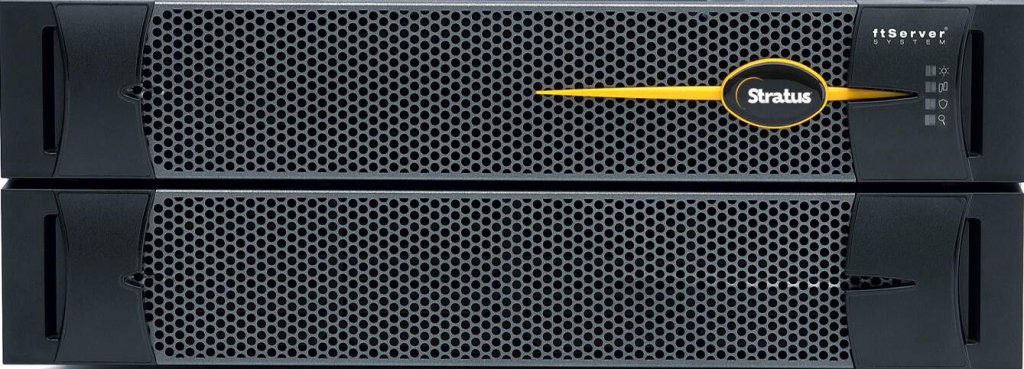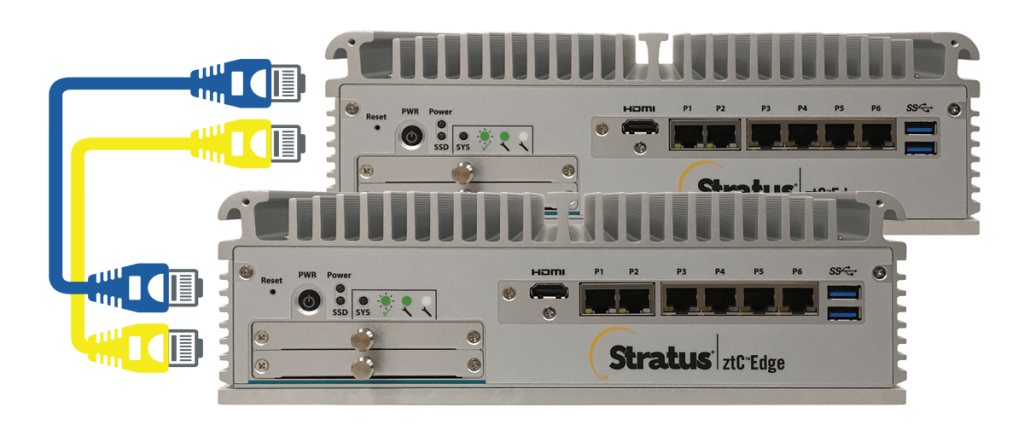
The Stratus platforms and know-how in an Industry 4.0 age

Over the course of several months, we’ve been covering issues surrounding the cloud, edge computing, and the changes in businesses affected by what’s become known as Industry 4.0, especially engineering, manufacturing, and utilities companies. Those verticals are of particular interest to the readers of these pages because unlike “pure IT” businesses that are often digital service providers, companies adopting Industry 4.0 tend to have different aims for future technology uses, and currently deploy technology in quite different ways from other verticals.
We began by touching on the mismatch between what the technology press was saying a few years ago about a “stampede to the cloud,” and the reality of what has transpired. Regardless of industry sector, a hybrid technology stack is often the most suitable for many: a mixture of edge deployments, in-house data centers, and public cloud provisions. In industry & engineering settings, there’s a definite emphasis placed on edge computing for various reasons, and we noted that operational technologies have existed in edge deployments for upwards of thirty years. These days, companies are facing challenges unifying OT and IT, and are discovering that edge-based solutions are proving the most beneficial for their particular use cases.
In engineering settings like manufacturing plants, remote utility installations, and heavy industries, the breakthroughs in edge computing methods are the most significant trend since SCADA (supervisory control and data acquisition) solutions first began to appear baked-into plant, machinery and control/monitoring systems. Companies like Stratus have been instrumental in not only helping bridge the gaps between legacy OT and new IT systems, but by providing industry-specific edge technologies that can make facilities more efficient and productive — and do it safely, too.

Source: Stratus technologies – ftServer
Via technologies like the ztC Edge and ftServer, companies can begin to roll out a combination of technologies that manage to achieve the delicate balancing act that’s required for specifically industrial businesses: unified control over multiple sites, with each remote site run by resilient and safe, locally-installed systems. In short (and to use some technology press vernacular), a single pane of glass over multiple edge technology instances.
A worldwide survey taken by CFE Media Technology on behalf of Stratus has shown just how embedded technology has become in the mindsets of industrial professionals. Of those surveyed, 98 percent agreed with this statement:
“All engineers seeking to successfully advance their career must address the challenges and embrace opportunities brought by new technologies that integrate and analyze data to support decision making about controlled processes.”
That degree of consensus comes, of course, from the length of time industry has been using technology at factory-floor level, but also from the fact that according to Juniper Research, by 2024 the annual spend on edge processing in the Far East and China will reach an estimated US$4.6 billion. And that figure comprises 41 percent of the total global spend.
Given those figures, it would be easy to be overconfident of industry’s ability to transform digitally using the very best in edge technologies. But the CFE survey also showed that 55 percent of those asked cited lack of in-house knowledge as a reason to be tentative. At Tech Wire Asia, we’ve noticed that across industry, there are worries about deploying what are seen as delicate, high-tech edge solutions in industrial settings. Companies seek systems that are resilient physically but also can provide uptimes that hit the magical five-nines level: 99.999 percent uptimes. A tall order, perhaps?

Source: Stratus Technologies – ztC Edge
In addressing this issue specifically, we covered the Stratus Technologies ztC Edge platform; a solution that can perform highly autonomously without needing specialist IT staff onsite to ensure system uptime, plus a capability to monitor & attenuate legacy systems, and embrace new-generation IIoT too. That’s a significant factor in engineering or heavy industry settings, where the throwaway IT term, “legacy,” actually refers to plant, machinery, and facilities that are long-lived and represent a massive investment.
The second point of concern the CFE survey unearthed was one of cybersecurity — although industrial companies are hardly alone in that respect. But the truth is that older OT protocols and communications were never designed to be resilient to cyber incursion. Therefore, companies can’t simply unify legacy OT systems into modern TCP/IP networks (and potentially, from the local network to the cloud & back) without significant worry. However, a company like Stratus has the necessary technology and industry-specific know-how to be able to provide safe solutions and guide businesses in their digitization journey. It’s a company that’s fully cognizant of all the specific security issues that will indubitably arise.
To help your company improve its production methods and streamline all operational issues via industry-specific technology solutions, we recommend a conversation with Stratus Technologies. Whether your query is about an esoteric data-processing approach you seek from a public cloud provider, a way to better predict operational downtime, or need guidance as to how to provide local edge-based technology, get in touch with a representative near you today.
READ MORE
- Ethical AI: The renewed importance of safeguarding data and customer privacy in Generative AI applications
- How Japan balances AI-driven opportunities with cybersecurity needs
- Deploying SASE: Benchmarking your approach
- Insurance everywhere all at once: the digital transformation of the APAC insurance industry
- Google parent Alphabet eyes HubSpot: A potential acquisition shaping the future of CRM
